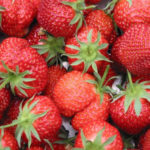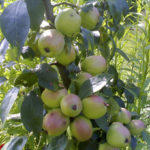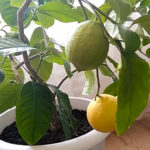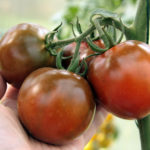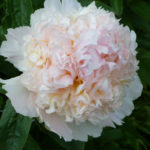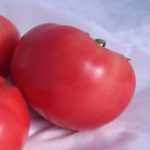Beet variety Lada (feed)
Fodder beet is an irreplaceable food product used in the process of raising farm animals (including cattle), as it is a valuable source of pectin and minerals. This vegetable is being bred not only in Russia. Not so long ago, a very promising variety of Lada was bred in the Scientific Breeding Center of the National Academy of Sciences of Belarus for Agriculture. In 2004, it was registered in the State Register of Varieties of Belarus with admission to cultivation in all regions of the country. The novelty turned out to be promising in terms of yield and uniqueness of the composition, therefore it significantly surpasses the well-known domestic and foreign varieties in its qualities. The inclusion of this vegetable in the diet of animals and birds allows not only to significantly save on concentrated feed. The health of animals increases, which means that their reproductive capacity improves, and the quality of milk, eggs and meat also becomes higher. Beetroot is also valuable as a milk-producing crop; in winter, it helps to increase the milk yield of a cow by 15 - 18 liters per day. The variety is grown mainly on an industrial scale.
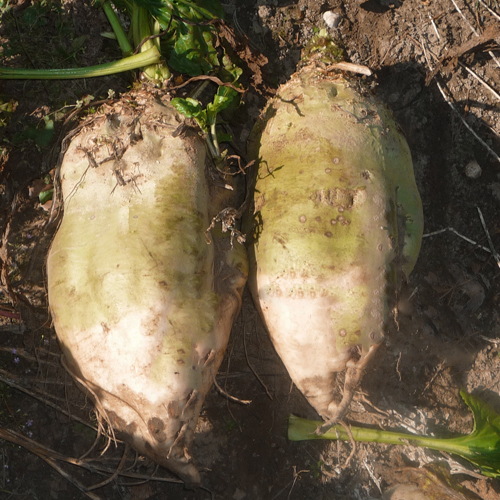
Description
The leaf rosette is semi-erect, dense, consists of 30 leaves. The petiole is strong, uncolored. The leaves of the variety are deep green in color, bubbly, elongated-ovoid, with a blunt tip, medium in length and width, the edge of the leaf plate is wavy, the surface is shiny. The tops remain and grow until the moment they are harvested. Inflorescences consist of 2 - 6 small yellow-green flowers. The shape of the root crop is oval-cylindrical, of medium length and width, with an elongated tip. The color below the soil level is white-pink, closer to the leaf rosette, that is, above the ground level, it is slightly greenish. The pulp is white, dense, juicy. 100 grams of raw material contains 11 - 13% of easily digestible sucrose. Lada's roots are large in size, some specimens reach a weight of 25 kg.
Characteristics
- The yield of the variety is very high. On average, 1200 centners are harvested from one hectare. The recorded maximum yield of beets is 1720 centners from the same area;
- the growing season can be on average 4 to 5 months. Harvesting, as a rule, is carried out in late September - early October, by which time all valuable substances have time to descend from the tops into the root crop;
- our heroine belongs to one-germ varieties (almost 80%), that is, one plant grows from one seed. Seed fraction 4.5 - 5.5 mm. Seed germination is high, it is 85 - 90%;
- immunity is very strong. The leaf apparatus remains healthy until harvest due to its high resistance to cercospora. Root crops are resistant to lagging rot during storage;
- in addition, Lada is not very susceptible to color;
- the variety easily tolerates long-term transportation, is not afraid of mechanical damage;
- despite the immersion of the root crop in the ground by more than half, the degree of its pollution is low;
- keeping quality is excellent. Subject to the temperature regime and the required humidity, beets are suitable for long-term storage and, according to reviews, can retain their qualities for up to 2 years;
- the variety is used for feeding large and small ruminants, pigs, rabbits, chickens.
The submergence of the root crop in the soil during the growing season is 60 - 65% (that is, by ½ or 1/3), so it is quite suitable for manual harvesting. The fruit is removed from the soil with little effort, to help yourself during harvesting, you can carefully dig in the vegetable with a pitchfork.But if Lada is grown on an industrial scale, special agricultural machinery is used during the harvest season.
Agrotechnics
Seeds of this fodder beet are sown from the second half of March to the beginning of April. By this time, the soil at a depth of 10 - 12 cm should have already warmed up to + 7 ° С. Recommended seeding density: 1000 pieces per one hundred square meters. The distance between plants in a row, taking into account large-fruitedness, is from 15 to 25 cm.The width of the row spacing is at least 45 cm.On light soils, seeds are planted to a depth of 3 - 4 cm, on denser soils - 2 - 3 cm. It is not difficult to grow a crop, it is unpretentious and healthy. Of the soils, chernozems turned out to be the most successful, it was on them that the maximum yield was shown. Clay soils require pre-planting treatment, which will increase their fertility and friability. Sandy soils require more frequent watering and an increased proportion of fertilizers, therefore, as a rule, they try not to plant forage crops on such types of soil. It is not recommended to grow a variety for 2 years in a row in the same place, as diseases accumulate and soil fertility is depleted. The best predecessors are wheat, rye, broad beans, corn, peas. An important stage of care is loosening, which destroys the soil crust that forms after watering or precipitation. Watering is stopped 3 to 4 weeks before the start of harvesting. As you can see, growing fodder beets is not much different from table or sugar beets.
Lada is an indispensable vegetable for those who raise livestock, poultry and other farm animals. The variety was highly appreciated for its excellent yield, long-term storage capacity and high disease resistance. But the variety is especially appreciated for its high nutritional value and as a milk-producing feed.
Sugar beet Lada was added to the State Register of Breeding Achievements of Russia in 2006. Its applicant and originator is NPSSP "Ramonskie Seeds" LLC. Regions of admission: Central, Ural, Volgo-Vyatka and Central Chernozem districts.
The culture is a single-seeded triploid hybrid on a sterile N type base. The yield in the Central Black Earth Region was 372 c / ha, the sugar content in the vegetable was 17.6%, the sugar harvest was 65.7 c / ha, which is slightly higher than the standard. The mass of the root crop is 469 grams. The average yield in the Ural region was 345 c / ha, sugar content 19.1%, sugar collection 65.7 c / ha, for the standard the indicator was, respectively: 329 c / ha, 18.6%, 61.2%. Weight 428 grams. In the field, the variety was strongly affected by root-eater and cercospora, above average with powdery mildew.
